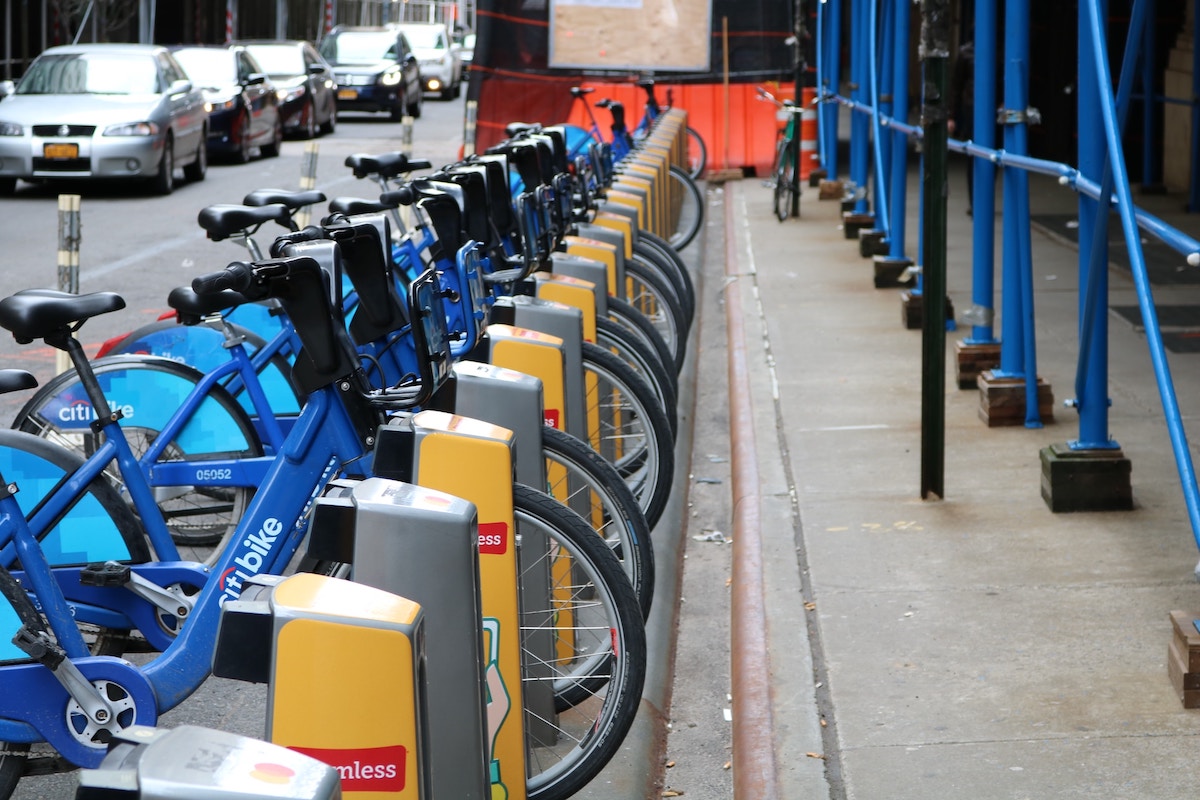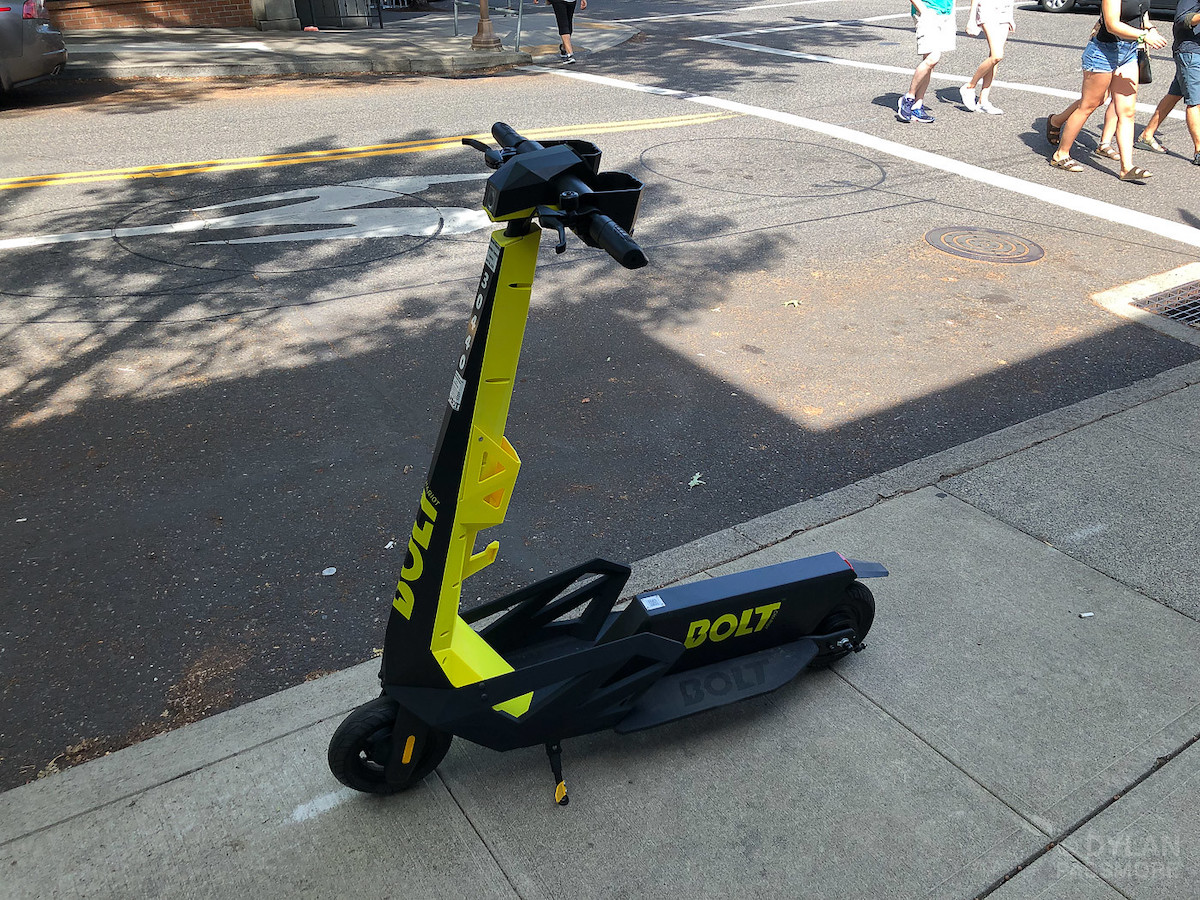A group of cyclists commute along the Pennsylvania Avenue bike lanes. Kevin Kovaleski used under CC BY-NC 2.0 DEED
This is part of a series about micro-mobility.
Micro-mobility sharing programs help increase access to bikes and scooters across the U.S. With different funding models, city sizes, and ridership levels, they don’t all look quite the same. While some cities have lost their programs due to funding issues, others are more fully investing in meaningful equity measures and integrating them in communities through public funding and non-profit management.
Making micro-mobility more accessible
Bike and scooter sharing programs aim to make micro-mobility more convenient and accessible. Bikes, e-bikes, and electric kick scooters can be rented by the minute, hour, ride, or day, depending on the program. They allow riders to grab transport where it’s needed and leave it behind when it isn't. Most bicycle sharing programs are “docked” meaning that the bike must be picked up and left in a secure dock. Meanwhile, electric kick scooters tend to be “dockless,” allowing for increased flexibility, as they can be picked up and dropped off anywhere.
The first U.S. bike share program was a small pilot in Washington, D.C. in 2008, which expanded in 2010. In 2013, bikeshare came to New York City, Chicago, and San Francisco. By 2022, according to the North American Bikeshare and Scootershare Association: “at least 157 million shared micro-mobility trips were taken in 401 cities across North America.” Their data shows that these trips offset “74 million pounds of CO emissions.” They also found that 2022 saw an increase in integration of infrastructure for shared electric bikes and scooters.

A Citi Bike dock in New York City.
Improving equity
Although New York’s Citi Bike is the nation’s largest bike share program, in 2019, only “16.5% of New Yorkers of color had access” to bike share according to Curbed New York. The original report found that: “more than three quarters (76.8%) of New Yorkers do not have access to bike sharing, and the remaining 23.2% who do are wealthier, whiter and better educated than the rest of the city.” Following the study, a joint commission between the city government and Citi Bike was created to address these shortcomings. Citi Bike developed a reduced fare initiative and first-ride-free offerings for low-income households. However, a 2023 study found few shifts in ridership demographics from the 2019 report.
Many bike share programs are also working to integrate adaptive options that enable people of different abilities to ride. For example, Detroit’s bike share MoGo offers “recumbent tricycles, upright cargo tricycles, hand tricycles, tandem bicycles, tandem tricycles, side-by-side quadricycles, and a box-bike.” Educational and outreach efforts are key to ensure people know the bicycles are available and teach them how to use them.
Public or private?
In 2023, 60% of bikeshare systems were privately owned, and just 28% had public ownership. Some advocates believe that equity remains an issue so long as bike shares are linked to profit. Grist writes:
“unlike buses or subways, bike-share services typically don’t receive public subsidies to operate; instead, they mainly rely on private-sector investment, philanthropic funding, and a battery of individual grants…To maximize the number of riders, and thus payments, many systems first focused on central city areas and dense neighborhoods with plenty of bus and subway stops. These places tend to be disproportionately white and higher-income.”
Half of bike share profits come from sponsorship and advertising rather than user-generated sources. This is a source of vulnerability for programs, as seen when Minneapolis’s highly popular bikeshare program shut down operation when operator Lyft lost its title sponsorship from Blue Cross. The same seemed poised to happen in the Bay Area due to funding issues, but instead local government stepped in to fill the gap in Lyft’s budget with $16 million.
Advocates say that public investment can help support the creation of bikeshare infrastructure in areas where programs would have the greatest impact rather than where they might be most profitable. This helps center equity concerns and offers opportunities to integrate with public transit, particularly for neighborhoods with less access to subway stops and bus lines.
Community leadership
Other micro-mobility models outside of the private- and publicly-funded do exist. When New Orleans canceled its contract with Lime, bikeshare disappeared from the city with little warning. The systems’ operator was determined to start it back up, but this time, with a nonprofit model. According to Grist, the city was asked to “provide space for bike racks and waive permit fees.” The new bike-share costs less to ride. The non-profit employs 20 full-time mechanics and other employees with fair pay and full benefits.
Plus, there is a “review process to ensure bikes are distributed equitably [with] an emphasis on connecting people in less advantaged areas to their jobs downtown and in the French Quarter.” Meanwhile, the bikeshare program provides free trips for seasonal vaccine appointments, and is working to locate more stations near health clinics, and to incentivize participation in fitness classes to support community health.

A dockless Bolt scooter in Portland, Oregon in 2019. Photo by Dylan Passmore used under CC BY-NC 2.0 DEED
Challenges and promise for the future
To deliver on the enormous promise of bikeshare, it’s clear that it needs to be better integrated in transportation planning. Constructing mobility hubs or simply planning better connections with existing public transit are key. But at the same time, there’s a need for safe cycling infrastructure, particularly given rising pedestrian deaths and clear data that indicates that safety is a major concern for whether people do or do not choose to ride.
